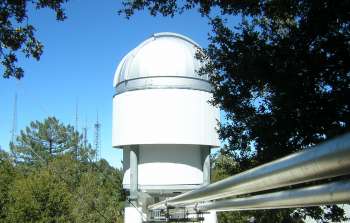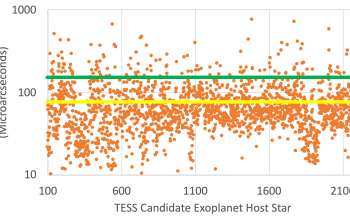sci20112 — Announcement
MRI Grant to GSU: A Win for CHARA Array and NOIRLab Community
September 18, 2020
The CHARA Array, the largest optical interferometer in the world, will grow even larger, thanks to Georgia State University’s success in the competition for a Major Research Instrumentation (MRI) Program grant from the National Science Foundation. A new, mobile telescope, which is funded by the grant, can be positioned as far out as 1 kilometer, improving the limiting angular resolution by approximately a factor of 3. The telescope can also be positioned to enhance u-v coverage for low spatial frequencies, which is especially valuable for detailed imaging of stars with large apparent diameter. While both configurations are scientifically important, another prime goal of the project is to demonstrate technology that can be used for a more ambitious program concept—the CHARA Michelson Array, with larger apertures and improved imaging capability.
The CHARA Array is available for open competitive access through the NOIRLab TAC. While CHARA open access was initially sponsored by GSU to build a community of users, the success of the program led to an NSF Mid-Scale Innovations Program (MSIP) grant to GSU, which currently supports 60 open nights per year. As it enters its second decade, CHARA open access has attracted observing proposals from more than 200 scientists.
Meanwhile, just a few days ago, GSU was notified that they can look forward to another funding award in the new year. We will report on this development and its impact in a future issue of Currents.
Contacts
Steve Ridgway
NOIRLab
About the Announcement
| Id: |
ID
sci20112
|

